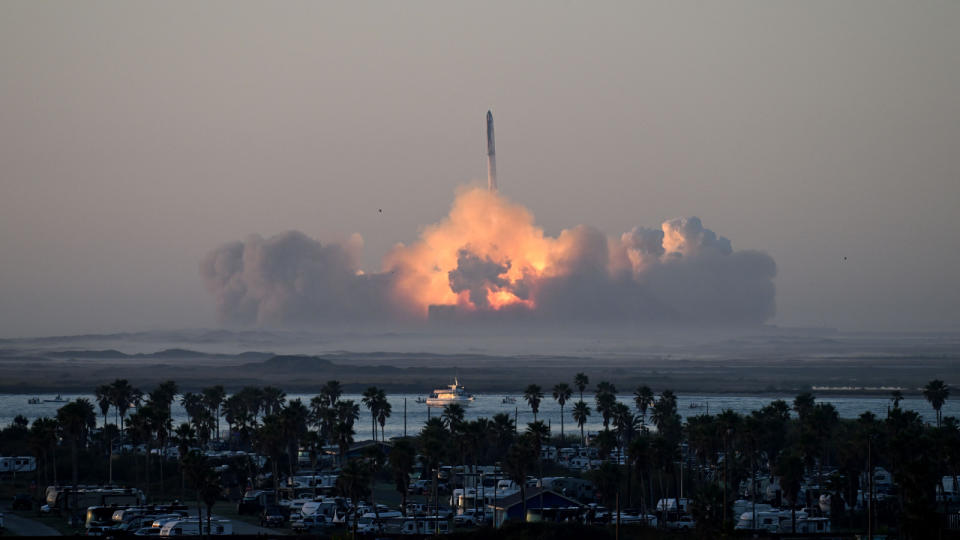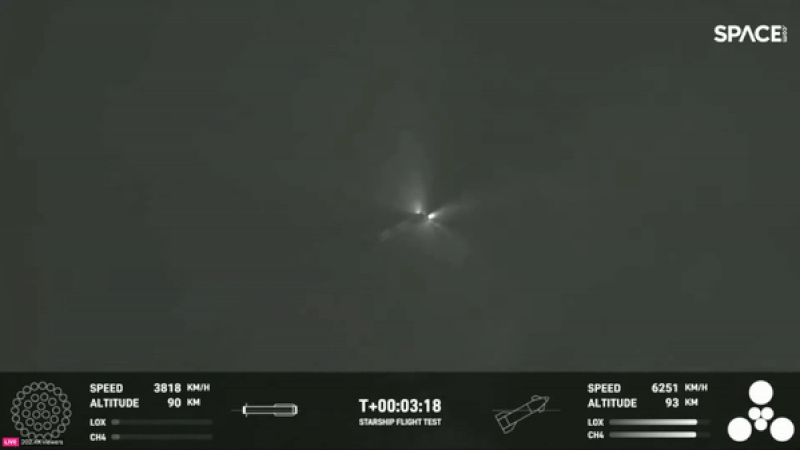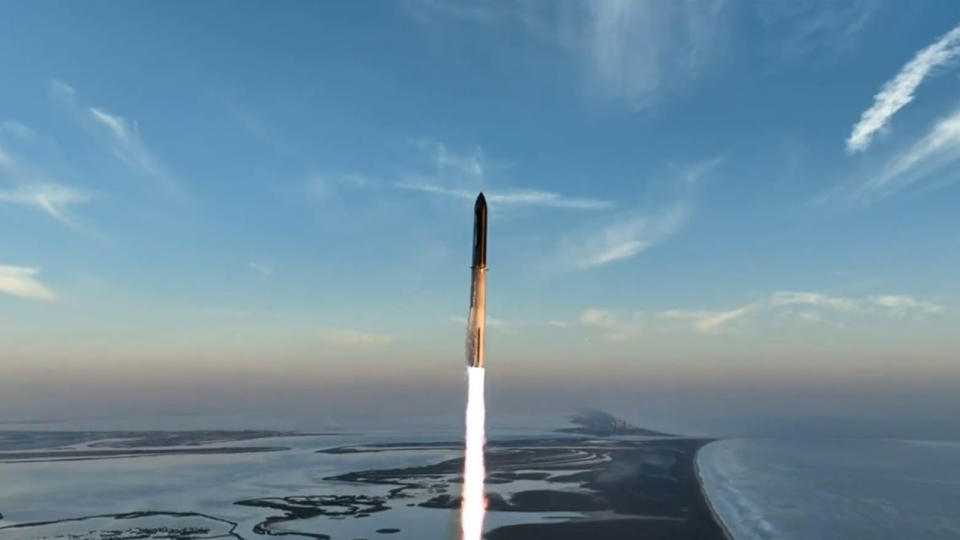When you buy through links on our articles, Future and its syndication partners may earn a commission.

The high-altitude explosion of one of SpaceX’s supersized Starship rockets last year temporarily ripped a hole in the upper atmosphere, a new study from Russian scientists shows. It is the first time this type of atmospheric disturbance has been created by a human-caused explosion, the researchers say.
On Nov. 18, 2023, SpaceX launched its superheavy Starship rocket — the largest and most powerful rocket ever built — for the second time ever from SpaceX’s Starbase test and manufacturing facility in Boca Chica, Texas.
Around 4 minutes after liftoff, the rocket’s first stage — the large, lower part that contains the main engines — detached from the upper part of the rocket as planned but unexpectedly exploded shortly afterward, before it could land back on Earth. Then, another 4 minutes later, the rest of the rocket blew up in a larger “rapid unscheduled disassembly” around 93 miles (150 kilometers) above the ground, when a fire started as the rocket vented liquid oxygen. The company’s founder and CEO Elon Musk later said that the rocket would have made it to orbit if it had been carrying a proper payload.
In the new study, published Aug. 26 in the journal Geophysical Research Letters, researchers revealed that the second explosion temporarily created a large hole in the ionosphere — the part of the atmosphere between 50 and 400 miles (80 and 650 kilometers) above Earth’s surface where gases have been ionized, or stripped of electrons, and turned into plasma.
“Usually, such holes are formed as a result of chemical processes in the ionosphere due to interaction with engine fuel,” study lead author Yury Yasyukevich, an ionosphere physicist at the Russian Academy of Sciences’ Institute of Solar-Terrestrial Physics (ISTP), said in a translated article from the Russian state media site TASS. This is the first known time that an ionospheric hole has been created by a “catastrophic phenomena” such as a human-made explosion, he added.
Multiple satellites and international ground-based stations observed the disturbance, which lasted for 30 to 40 minutes before the affected part of the ionosphere fully recovered, the researchers wrote. The peak size of the hole remains unclear.
Related: 20 satellites fall from sky after catastrophic SpaceX rocket failure, triggering investigation


Human-caused ionospheric holes are nothing new. Scientists have long known that chemicals in rocket fuel, such as carbon dioxide and water vapor, can react with ionized oxygen atoms, causing them to temporarily recombine — or turn back into regular oxygen atoms — leaving a gap, or hole, in the plasma sea within the ionosphere.
SpaceX’s Falcon 9 rockets are particularly prone to creating ionospheric holes, either during the separation of the rockets’ first and second stages shortly after launch or when the rockets dump their fuel during reentry. When the atoms within these holes reionize and turn back into plasma, they release red aurora-like light, creating bright, blood-red light shows in the night sky that astronomers have dubbed SpaceX auroras.
But in this case, the ionospheric hole was created “due to the shock wave generated by the Starship explosion,” which temporarily scattered the free electrons within the ionosphere, essentially stripping the plasma of its normal properties, the researchers wrote. Any of the rocket’s fuel not immediately burned up in the explosion “might have reinforced the depletion and extended its duration,” they added — but it was not the primary cause of the hole. As a result, there was no aurora-like light show once the plasma returned.


The researchers said that the effects of ionospheric holes are poorly understood and require further research but added that novel ionospheric phenomena like this provide a rare chance to learn more about the plasma-filled region of our upper atmosphere.
“Analyzing the data and understanding their nature, we understand more deeply the structure of the ionosphere, [and] the nature of the phenomena that occur in it,” Yasyukevich told TASS.
RELATED STORIES
—Dying SpaceX rocket tears blood-red ‘hole’ in the sky over Texas — again
—Dying SpaceX rocket creates eerily-perfect ‘dashed’ line in new photos. What’s going on?
—Dying SpaceX rocket creates glowing, galaxy-like spiral in the middle of the Northern Lights
This was the second time one of SpaceX’s 400-foot-tall (120 meters) rockets exploded in as many flight tests. In the first test, on April 20 last year, the first starship was given a self-destruct code around 4 minutes after lifting off when it entered into an uncontrolled spin around 18 miles (29 km) above the ground. On this occasion, chunks of debris from the destroyed rocket rained down on Earth, triggering a federal investigation and leading to a lawsuit from environmental groups.
A similar ionospheric hole did not occur after the April explosion because the incident happened at a much lower altitude, meaning its shock waves did not reach the ionosphere, the researchers noted.
Starship finally made it to orbit in one piece during its third test flight on March 14 this year but was lost somewhere in the Indian Ocean upon reentry.
